1571, early January.
As the years go by, the New Year’s banquet hosted by Nobunaga becomes more and more splendid.
In addition to the traditional celebrations of rice planting, black beans, and herring roe, a variety of auspicious osechi dishes such as simmered shrimp, rolled kelp, broiled eggs, and pickled vegetables were prepared.
Instead of cloudy sake, precious clear sake was served, which in a way showcased Nobunaga’s power.
But it couldn’t be helped that this aspect was also revealed.
Last year, Nobunaga suffered major defeats in diplomacy and battle intelligence, and was temporarily faced with a crisis of survival.
Although Nobunaga managed to escape the crisis, the wounds were not shallow.
His trusted general, Mori Yoshinari, was unable to take the front line due to injuries sustained during the battle of Usayama Castle, resulting in the loss of many warriors and soldiers, as well as a large number of defectors.
Losing numerous warlords was a significant blow to the Oda army, which already suffered from a chronic shortage of commanders.
With Mori Yoshinari retiring, the balance of power within the army underwent a significant change.
Previously, Mori Yoshinari, who was Nobunaga’s right-hand man, held the top position in the army.
However, with his retirement, Shibata Katsuie, Niwa Nagahide, Takigawa Kazumasu, Akechi Mitsuhide, and Hashiba Hideyoshi, the five great generals, found themselves in a situation where they competed for the top position in the army.
While under the command of the five great generals, Shizuko also began to exert direct influence within the Oda army.
Originally, she had indirect influence in the production and supply of weapons and ammunition, as well as increasing food production.
However, her military achievements in defending Usayama Castle during the Shiga Campaign, as well as the expulsion of the Rokkaku clan, albeit with the assistance of the Tokugawa army, earned her recognition as a powerful warlord.
What sets Shizuko’s army apart from the others is their high ability in castle construction and their strategy of minimizing risks and sacrifices.
“My Lord, I am extremely pleased to see you in such high spirits as we welcome the New Year.
I have come to offer my New Year’s greetings as follows.”
Shizuko will attend the New Year’s greetings ceremony.
Shizuko usually attends the ceremony on the second day of the New Year to greet Nobunaga.
This is influenced by the fact that the tea ceremony is held on New Year’s Day.
During the Sengoku period, the tea ceremony was widely practiced not only by samurai and warlords but also by women.
There are records of Sen no Rikyu’s daughter being trained in the tea ceremony, and Hideyoshi’s birth mother and Kitano Mandokoro receiving tea lessons from Sen no Rikyu.
However, from the time Kobori Enshu introduced the trend known as “Orime Konomi,” which established a unique flower arrangement style separate from the tea ceremony, the tea ceremony became primarily associated with the traditional kaiseki cuisine.
Especially during the New Year’s tea ceremony, the political aspect becomes prominent as it brings together the Oda clan and its retainers.
Therefore, Shizuko strongly wishes to avoid attending the New Year’s tea ceremony if possible.
“Yes, I’m counting on you again this year.”
Nobunaga responds cheerfully to Shizuko’s greetings.
After the greetings to Nobunaga are finished, she will participate in the customary banquet, and once that is over, she will return home.
However, she will need to make rounds of greetings to other Oda clan retainers over the next few days.
After the New Year’s greetings, the next step is to compile this year’s development plans.
While having influence within the Oda clan may expose her to unnecessary political turmoil, it also has the advantage of facilitating large-scale projects.
Furthermore, Shizuko’s military achievements last year have put her in a position where it is easier to obtain budget allocations.
With an increased budget, the scale and number of development projects will naturally increase.
“This year, we have mirrors, magnets, sextants, rangefinders, sundial compasses, various circular slide rules, mechanical marine chronometers, sterling engines… Hmm, maybe there are too many.”
Mirrors, magnets, sextants, rangefinders, sundial compasses, and various circular slide rules are already completed products, but the main focus of the plan is to standardize and establish a mass production system for these tools.
In particular, mirrors, sextants, rangefinders, and magnets are important components of sundial compasses.
Establishing an industrial-scale production system is of great significance.
“We can leave the chronometer for later, but I want the sterling engine as soon as possible.”
In 1816, a Scottish pastor named Robert Stirling developed an external combustion engine that used external heating and cooling of gas (or air) inside a cylinder to obtain work by utilizing changes in volume.
Unlike steam engines, which frequently experienced high-pressure boiler explosions, Stirling engines using low-pressure air had no risk of boiler explosions.
The advantage quickly spread, and many Stirling engines were manufactured.
However, after the invention of gasoline and diesel engines several decades later, Stirling engines were excluded from the mainstream of power sources.
Nevertheless, Stirling engines, which demonstrated high thermal efficiency, continued to be researched, and in recent years, research has been conducted for the purpose of using energy sources other than petroleum.
The advantages of Stirling engines include their quiet operation, high theoretical efficiency, absence of harmful emissions like gasoline and diesel engines, and, above all, their ability to use various heat sources.
However, a technical challenge is the difficulty of ensuring airtightness when scaling up the engine or creating high-output engines.
Among the various types of Stirling engines, Shizuko’s first goal is to develop a free-piston Stirling engine that uses hot water as the heat source.
Although the output is small, it can be manufactured with fewer parts, and the advantage of using hot water as the heat source is significant.
Once a Stirling engine that runs on hot water is completed, the second stage is to change the heat source from hot water to sweet potatoes.
Sweet potatoes are chosen because they are easy to cultivate, have high yields, and can be grown in the air.
They can be used as chips as a substitute for coal when dried, distilled into ethanol as a substitute for gasoline, and heated with cow dung to generate methane gas.
They are an excellent energy crop among natural energy sources.
In modern times, using crops as fuel instead of food causes price inflation issues, but in the Sengoku period, there is no need to consider such factors.
However, Shizuko believes that using food as fuel should be a last resort.
If Stirling engines are put into practical use, the greatest benefit will be for ships.
By incorporating screw propellers, both military and transport ships will experience a significant increase in speed.
The improvement in speed will also enhance rear support capabilities and the ability to continue fighting.
“By the way, let’s check on the progress of pepper cultivation.
I haven’t had many opportunities to see it, so I should check now.”
It is at this point that Shizuko realizes that she doesn’t know much about the current state of pepper cultivation.
It is an uncharacteristic mistake on her part, but she had been occupied with dealing with the first Oda encirclement during the Shiga Campaign, leaving no time to focus on maritime reforms.
Shizuko contacts the Kuki navy, which is Nobunaga’s naval force, through Aya.
The Kuki navy, led by Kuki Yoshitaka, is one of the few naval forces within the Oda army, although they are not currently making significant contributions.
They fought on the side of the Western Army in the Battle of Sekigahara and suffered defeat, ultimately leading to their self-destruction.
As the official naval force of Nobunaga and Hideyoshi, the Kuki navy had made remarkable achievements.
Kuki Yoshitaka’s most famous accomplishment was the construction of the iron-plated Atake ship, also known as the “Tekkosen,” after the devastating defeat in the first Battle of Kizu River.
While they have not constructed iron-plated ships, they have been working on the practical application of screw propellers, countermeasures against the Mouri clan’s “Bairoku-dama” and the Koga clan’s “Bairoku-hiya,” and the practical use of keels.
Although it requires a vast amount of funds, there is no shortage of research funding as Nobunaga understands the importance.
If screw propellers are put into practical use, the speed of ships will increase, and if keels are put into practical use, ramming attacks by warships will become possible.
During the Sengoku period, there were three types of military ships: large Atake ships, medium-sized Sekibune ships, and small Kohaya ships.
There were also cargo ships for transporting troops and provisions, as well as Iroku ships equipped with watchtowers that would attack enemy military ships from a high position.
However, all Japanese ships used a shipbuilding method that did not utilize keels, instead using wooden planks connected by nails and “kasugai” joints.
This made them lightweight and fast, but they were more fragile than Western or Chinese ships and susceptible to damage from collisions.
Therefore, if they were hit by the fixed armament of ramming attacks, they would become immobilized or even sink.
However, ramming attacks also had the disadvantage of causing significant damage to friendly ships, so caution was necessary when using them.
A few days later, a letter from Yoshitaka arrived, but the summary of its contents was, “We are currently in a critical stage of development and cannot spare the time to meet.
We are reporting the current situation to Lord Oda regularly.” Whether they truly have no time to spare or they are wary of information leaks through double reporting is unclear, but considering the unfavorable response, Shizuko decided not to push further and sent a safe reply letter.
“I wonder how the pepper plants are growing.
I haven’t had many opportunities to see them, so I should check now.”
Greenhouse cultivation of pepper plants initially faced many failures, but now they are starting to make progress.
If everything goes well, they should be able to harvest peppers as early as next year, or at the latest, the year after.
After next year, there will be no shortage of seedlings, and it will gradually be possible to increase the production volume within Japan.
“Things are going well.
Pepper is essential for meat dishes… Well, it’s not necessary at the moment, though.”
If there is a problem, it is that the consumption of pepper, which is commonly used in meat dishes, is lower among the Japanese compared to Westerners.
On the other hand, the consumption of chili peppers has significantly increased.
It was due to the creation of shichimi togarashi, a seasoning primarily made from chili peppers, rather than the preference for chili peppers alone.
With Nobunaga’s rapid expansion of businesses, various industries have become extremely busy.
The construction industry, in particular, is bustling, and there is a shortage of carpenters in Kyoto, leading to the recruitment of carpenters from various regions.
The problem that arose was the meals for the carpenters.
Especially for carpenters working away from home, the issue of how to resolve their dissatisfaction with meals became a concern.
The reason why simple restaurants couldn’t fully resolve the issue was that the carpenters disliked feeling full and preferred to eat meals in small portions.
Rather than settling down to eat, it is better to eat quickly.
As a result, fast food, especially kake soba (buckwheat noodles served in broth), became popular.
Kake soba is a preferred way of eating during the cold season, making it popular among carpenters working on construction projects from autumn to winter.
Initially, the only condiment used was green onions, but when Gorou stayed in Kyoto last year, he experimented with new condiments such as tenkasu (tempura scraps), ichimi togarashi (ground red chili pepper), and shichimi togarashi.
At that time, Gorou asked a soba shop to try the new condiments instead of making his own soba, and nearby carpenters noticed Gorou’s actions.
Wanting to hear other people’s opinions, Gorou had the carpenters try the new condiments.
Among them, shichimi togarashi received the highest praise, and the story spread among the carpenters, quickly becoming a major trend.
“Next year’s chili pepper production is going to be amazing.
Well, for now, we only use shichimi togarashi, so I don’t think there will be any other demand for it.”
After checking on the greenhouse cultivation of peppers, I also check on the other crops and orchards.
If the fruit harvest is successful, the seedlings will be sent to other regions one after another, and the increase in production can be expected.
Therefore, I pay attention to the orchards to some extent.
With grafting and budding techniques, it is possible to achieve flowering and fruiting within a few years.
As they say, “peach and chestnut trees take 3 years, persimmons take 8 years, plums take 13 years, and yuzu takes a whopping 18 years (there are other patterns),” it takes a long time for plants grown from seeds to flower and bear fruit.
However, if they are cultivated through grafting, yuzu trees can flower and bear fruit in 3 to 4 years, at the latest 5 years.
Of course, depending on the fertilizers and cultivation methods, it may take longer, but on average, fruits can be harvested in 4 years.
The same goes for plums, which take 4 to 5 years for grafting and budding to have an effect, especially for varieties that require a long time to flower and bear fruit.
“Should I practice compound bow after harvesting the mandarins?”
Along with the samurai residence where the warlords stay, several training grounds, including an archery range, were built.
After harvesting a few mandarins, Shizuko enters the long-distance range, which is about 100 meters away.
It can be said that it is Shizuko’s exclusive training ground, although there are three targets installed.
However, Shizuko only uses the long-distance range during the severe cold of winter.
However, for Shizuko, who controls the horse with only her abdomen and legs and focuses on horseback archery, stationary targets are not very useful for training.
Especially for the horseback archery unit, which is the only elite unit in Shizuko’s squad, they are subjected to particularly rigorous training.
Oda family vassals who witnessed the training of shooting arrows from a fast-flowing river to targets more than 75 meters away unanimously said, “These guys are crazy.” Although they rarely train at night, humans with good night vision can still achieve an 80% accuracy even if the stationary target is nearly 50 meters away.
“…Hmm, it’s subtle.”
Even if the target is 100 meters away, it is not particularly difficult to hit it as long as you get the hang of it.
But the most demotivating thing is being alone.
It is because there is a rival that one can be motivated to train, and hitting the target alone does not feel pressuring or interesting.
“No good, I can’t get into the training.
It would be better to go hunting deer in winter gear.”
Understanding that training in a sloppy state is meaningless, Shizuko ends the training and tidies up the archery range.
“Welcome back, Shizuko-sama.”
Aya welcomes Shizuko at the entrance, perhaps seeing her returning home.
Shizuko brushes off the dirt, hands over the compound bow and other items to Aya, and asks her to clean up.
“By the way, Aya-chan, don’t you go home for New Year’s?”
Keiji, Saizo, Nagayoshi, and Kimyomaru (Oda Nobutada) are not here due to New Year’s.
However, Aya has never mentioned going back home even once.
Shizuko realizes for the first time that she has never asked about Aya’s family situation.
“Have you not heard from the Lord? I have no home to return to and no relatives to rely on.
Therefore, I do not go home like everyone else.”
“Um… if it’s not too much trouble, could you tell me…?”
“There is no need to hide anything, so there is no problem.
As you know, these are chaotic times.
Just like anywhere else, my parents and siblings were involved in battles and killed.
I have no memory of my relatives, so I don’t know if they are alive or dead.”
Although she had expected it, Shizuko couldn’t hide her shock at hearing the details from Aya herself.
But Aya, as if saying it’s not a big deal, continues speaking with her usual calm and mature face.
“After that, I went through various things and was taken in by the Lord, and now I serve you, Shizuko-sama.”
“Um… I’m sorry about that.”
“As I mentioned earlier, it’s a common story.
There is no need for you to worry about it.
And please rest assured, I am not selling myself.
Therefore, there is no risk of me infecting you with any illness, Shizuko-sama.”
Shizuko’s first impression of Aya was that she was a “mature child.” However, upon hearing about her circumstances, she realized that it was a mistake.
Aya had been placed in an environment where she had to be a mature child before she even reached the age of ten.
(I see, so she was searching through my room in the beginning because she was assigned to do so.)
Shizuko finally became certain of the meaning behind suddenly being given a maid.
However, she has no intention of bringing up the past or doing anything about it now.
Although Nobunaga did not initially consider Shizuko a trustworthy person, assigning her as a maid was a sign of consideration.
“I don’t mind about that.
Well, just because I learned about Aya-chan’s past doesn’t mean I’ll change my attitude now.
Aya-chan doesn’t need to worry about her birth either.
It’s common for warlords to hide their birth.”
There are many unknowns about the birth of Mitsuhide Akechi and Hideyoshi Kinoshita, the two future top figures in the Oda family.
Although their backgrounds are somewhat recorded, there are many unclear points in the early stages, and there are doubts about whether they truly achieved great feats.
Compared to that, Shizuko considered Aya’s past as something insignificant.
“I don’t mind, so Aya-chan doesn’t need to worry.”
To dispel the heavy atmosphere, Shizuko abruptly ends the conversation.
There is a hot spring flowing where Shizuko lives.
Every day, a considerable amount of hot water springs up and is drained into the river, but there is no sign of it running out.
Although it is classified as a non-volcanic hot spring because there are no volcanoes nearby, the heat source is unknown.
The point where it is drained into the river remains warm even in winter, attracting many animals seeking warmth.
It could be said that it was a gathering of animals.
However, there are also animals that cannot join the gathering.
One of them is Hana, a female Turkish Angora who gave birth last year.
Turkish Angoras usually enter their mating season around September and give birth about two months later, around November.
Mitsuhide Akechi and Fushitaka Hosokawa had stillbirths, and Nobunaga and Sakihisa Konoe had three kittens, but two of them died before a month had passed.
Shizuko speculated that the kittens couldn’t withstand the cold.
Hana, the mother cat, settled in Shizuko’s place and gave birth to four kittens there.
As she occupied the men’s bath area, the male members couldn’t use the bath for several days, but they didn’t complain and watched with amusement.
Nagayoshi, who was particularly enthusiastic about the birth of the kittens, would even go into the water bath and show that it was no problem.
Of course, it goes without saying that he caught a cold and fell ill later.
For the next month, Shizuko monitored the situation with a field scope, but mostly left it to the mother cat, Hana.
After one month, various training and discipline had to be given to the kittens.
Especially from around one month old, they needed to be fed not only their mother’s milk but also weaning food.
It can be said that the character and abilities of the kittens are determined through training and care until they become independent at around six months old.
However, when it comes to one-month-old kittens, their interest in toys is particularly high.
Normally, the mother cat would provide live mice, but since many animals prey on mice when they find them, it became very difficult to find mice.
Instead, Shizuko made spherical objects with factice and gave them cloth-covered rubber balls for protection, and the kittens’ interest exceeded expectations.
They played with the rubber balls every day, and occasionally Nagayoshi secretly played with them using a cat toy.
Nagayoshi thought he hadn’t been caught, but unfortunately, the location where Hana was could be observed with a field scope, so everyone eventually found out.
Since no one dared to point it out and Nagayoshi would get angry if they did, everyone smiled and watched without touching them.
The shepherds all entered their heat cycles, although there were a few days of difference.
Shizuko decided to start the German Shepherd Wolf Dog project, with a male wolf and a female German Shepherd as the breeding pair.
The breeding plan is similar to the Dutch-originated Saarloos Wolfdog.
A wolf-dog, as the name suggests, refers to a hybrid dog or a breed created through crossbreeding between a dog and a wolf.
Wolf-dogs have a high level of sociability, excellent hearing and sense of smell, and high intelligence, but they also have a high level of independence.
Even in modern times, there are few wolf-dogs because they are considered difficult to train.
Of course, Shizuko didn’t just come up with the Wolf Dog project out of desire.
If things continue as they are, she may be able to leave a mark in history, but Wittman, Kaiser, and Konig won’t.
Therefore, she wanted them to leave evidence of living in this turbulent era.
However, there is a big problem.
Wolves only mate with the top pair in the pack, but in the current situation, it is Wittman and Barty who are mating, not Shizuko, who is at the top of the pack.
So, Shizuko doesn’t know if the pack will hold together if she tries to mate Kaiser, Konig, Adelheid, and the others with dogs.
As a trial, Shizuko tried putting Lutz and Shepards together, but it failed because Lutz became stressed when suddenly isolated.
Ritter quickly mated, perhaps because he saw his parents mating or thought he could get out if he mated.
It was a quick action, but it seemed that being put together with unfamiliar dogs was stressful, and he developed a clingy behavior for a while.
Adelheid showed intense aggression towards the Shepards shortly after being put together, resulting in failure.
Kaiser was very indifferent.
He understood the situation immediately and mated with the Shepards.
However, as soon as it was over, he barked as if saying to let him out, so Shizuko hurriedly released him.
Kaiser, like Kaiser, had a high level of understanding, but the situation was even more serious.
He didn’t leave Shizuko’s side for a while and developed a clingy behavior, even when she was sleeping.
Unlike Ritter, Kaiser was a bit more difficult to handle due to his large size, but considering that the pack did not collapse, Shizuko thought it was a small price to pay and tolerated Kaiser’s clingy behavior for a while.
With this, the genes of the three dogs were passed on, and now it was a matter of selecting the best individuals from the puppies born and continuing to crossbreed them with Shiba Inus and other dogs to create excellent German Shepherd Wolf Dogs.
Shizuko hoped that their children, grandchildren, and future generations would excel as guard dogs.
“I’ve requested a male golden eagle, but I don’t think it will be transported soon.
I have a feeling that the red and black kites will bring their nests here on their own.”
After reading the report, Shizuko had a headache.
Because the Osprey is a raptor that does not change mates for life, she asked Frois to arrange for a male Osprey to be transported to Japan.
However, capturing an Osprey was difficult, and it was uncertain whether Shirogane would take a liking to the male.
As for Akagane and Kurogane, their breeds were unknown.
There was no choice but for the two of them to find mates on their own.
“Shizuko-sama, something from Christianity has arrived.”
“Oh! It finally arrived! Quickly, take the item to the hot spring room (…).”
Shizuko threw the report she was reading onto the floor and returned to her room with a triumphant air.
After sighing, Aya picked up the discarded report.
“Cocoa rots surprisingly quickly, doesn’t it?”
Shizuko sighed, knowing that most of the opened fruits had rotted.
The plants that Shizuko asked Frois for were seedlings and seeds of coffee and cocoa, which she had requested last year.
Cocoa, which is thought to be impossible to cultivate in Japan, is actually being grown in several plantations in Izu.
The secret of how cocoa, which grows in tropical regions, is cultivated is the hot spring wastewater.
Most of the hot spring water is unused and discarded.
Shizuko’s hot spring was no exception, with most of the water being unused and flowing into the river.
Although it was being somewhat utilized, such as for hatching eggs, breeding soft-shelled turtles, and providing a bathing place for birds, the hot spring wastewater was not an essential facility.
Shizuko believed that she needed crops that could be cultivated because of the hot spring wastewater.
The crop she set her sights on was pepper.
With the completion of the makeshift greenhouse necessary for cultivation, she was convinced that she could use the hot spring wastewater to create a virtual tropical rainforest climate and engage in hot spring steam cultivation.
The cultivation method known as hot spring steam cultivation or hot spring heat cultivation was not something Shizuko came up with.
There was a cultivation farmer in the Okuhida Onsen area, at an altitude of 800 meters, who had successfully cultivated bananas using hot spring wastewater.
He had already succeeded in cultivating not only bananas but also coconut palms, cocoa, and dragon fruit, proving that cultivation using hot spring wastewater had significant effects.
There were also farmers in Izu who had successfully cultivated cocoa without pesticides, further proving that it could be cultivated at low cost for commercial use.
In modern times, the problem would not arise, but in the Sengoku period, the difficulty lay in collecting vinyl for the greenhouse and collecting metal parts like iron pipes.
However, Okabe solved the problem by combining bamboo, soft wood, and hard wood, and successfully created a magnificent wooden greenhouse.
Shizuko couldn’t thank Okabe enough for fulfilling her request, but he himself felt like saying, “Please, no more.”
With Okabe’s help, three vinyl greenhouses that replicated the only tropical rainforest climate in the Sengoku period were completed.
Most of the hot spring water was directed into the greenhouses, but since the use of the hot spring water was limited to when Nobunaga used it, there was no problem.
The difference from modern greenhouses was that the hot spring wastewater could only be sent from Shizuko’s house, which was close to the greenhouses, and only one of the three houses could be entered from inside Shizuko’s house.
With the ability to create temperatures above 20 degrees Celsius and high humidity even in winter, cultivating pepper became relatively easy.
Shizuko began to think that it would be a waste to only cultivate pepper in the greenhouses now that there was room.
She initially considered growing bananas, but seedless bananas were a chance occurrence and in the Sengoku period, only bananas with hard seeds the size of azuki beans were available.
She couldn’t think of any other fruits to grow.
But one day, while drinking soy coffee, a crop came to Shizuko’s mind.
It was the cocoa tree.
Christopher Columbus was the first European to obtain cocoa beans.
He obtained cocoa beans near present-day Honduras during his fourth voyage and brought them back to Spain.
However, since he did not know how to use them and brought them back, no one realized their value.
It was Hernán Cortés, a conquistador, who recognized the value of cocoa in Europe.
He learned how to use it in the Aztec Empire in 1519.
Since then, chocolate, with added sugar and spices, was welcomed by the upper class, and in 1526, a plantation was established on the island of Trinidad.
Shizuko wanted the Trinitario variety, but Trinitario, like seedless bananas, is a variety that was accidentally created in the 18th century and is not available.
Therefore, in the Sengoku period, there were only two varieties: Criollo, which fascinated the European upper class, and the inexpensive Forastero.
Normally, cocoa would be in a monopoly state by Spain and would be impossible to obtain due to its secret nature.
However, Frois had become famous not only within the Jesuit order but also among nobles and royalty in various parts of Europe for discovering a treatment for scurvy.
Therefore, many people wanted to get close to him, and taking advantage of that, Frois succeeded in secretly smuggling cocoa beans out with the help of Spanish merchants.
Frois received the cocoa beans from the Spanish merchants and sent them to Nobunaga along with a letter, and Nobunaga sent the cocoa beans to Shizuko after reading the letter.
Shizuko, upon receiving them, made a huge donation to Frois along with the payment.
The reason for the large donation was that Frois and his group were building a church in Kyoto, but they lacked funds and were being hindered by sabotage, such as the destruction or theft of construction materials by various organizations.
Of course, Shizuko did not have any newfound faith in Christianity, nor did she sympathize with Frois and Christianity.
She simply made a donation as an initial investment to import overseas crops to Japan through the Jesuit order.
“Wow, it smells so bad because it’s rotten.
Let’s quickly extract the intact seeds and put them in pots.”
Shizuko cracked open the cocoa pods, which usually contain about 30 seeds each, and extracted the intact seeds directly into pots.
She also extracted seeds from the rotten cocoa pods with some hope, but about 90% of the seeds had rotted.
Nevertheless, thanks to the abundance of seeds, she was able to collect around 30 to 40 seeds from both varieties.
“Even though it is said to have been introduced to the island of Java in Indonesia by the hands of the Spanish, transportation capabilities were poor in the Sengoku period.
Ugh, it stinks.
Let’s quickly dispose of it by incineration.”
It was in 1560 that cocoa was introduced to the island of Java in Indonesia, but commercial production did not begin until the 20th century.
Unlike coffee, cocoa is not produced on large plantations but is cultivated all over the world.
This is due to the botanical characteristics of cocoa.
Cocoa trees are shade trees and need to be grown in the shade of other trees until they mature.
Because of this, cocoa is weak to strong sunlight and cannot be cultivated in large areas with a single crop.
However, instead of gaining the advantage of scale, cocoa is suitable for intercropping with bananas.
Therefore, it is a crop suitable for small-scale farmers to grow as a side business.
“If that’s the case, maybe I should have requested cassava instead of wild bananas.
Well, there’s nothing we can do about it.
Let’s just put something that provides shade for now until the bananas grow.”
Cocoa trees require shade, so they are often planted together with banana seedlings.
Bananas grow faster and have large, flat leaves that are ideal for creating shade.
Additionally, while cocoa can be harvested from the fourth year onwards, bananas can be harvested earlier, so they are harvested first.
There are other conditions for cultivating cocoa trees.
First, an average temperature of 22 to 25 degrees Celsius and an annual rainfall of at least 1500 millimeters are required.
However, overwatering can cause root rot.
The average temperature should not drop below 15 degrees Celsius.
It is also important to maintain high humidity, and land near rivers is suitable for this.
Dry winds should never be allowed to blow on the trees.
The soil can be clayey, but it is essential that the soil is deep and fertile due to the presence of humus.
The most important thing is to block more than 50% of direct sunlight for the first two years.
After surpassing two years, it is no longer necessary to provide shade, but this condition can be considered the most challenging.
It is extremely difficult to replicate the environmental conditions for cocoa cultivation in modern times.
If cocoa is cultivated in a vinyl greenhouse in Japan, the heating costs alone can range from one to two million yen per month, depending on the use of heavy oil or kerosene.
As a side note, bananas are often mistaken for trees, but in terms of plant taxonomy, they are classified as herbs.
The probability of cocoa flowers being pollinated is said to be 1% through natural pollination and around 3% through artificial pollination.
Therefore, although cocoa trees become mature in two to three years, there is a low chance of flowering and fruiting, and there are cases where they do not bear fruit for about seven years.
On the other hand, if you are lucky, cocoa beans can be harvested from the second year, but you shouldn’t have high expectations.
After finishing arranging the pots, Shizuko burned the rotten seedlings and unnecessary waste.
After burning them until they turned into charcoal, she buried them in holes along with quicklime.
“I wonder if we can make chocolate in four years with this.
Well, there’s also fermentation and drying, so it won’t be that easy.”
Shizuko didn’t think that they would be able to make sweet chocolate like today right away.
She thought that more ingenuity was needed for it to become the chocolate that Nobunaga desired.
It was inferred from the remaining records that Nobunaga couldn’t drink alcohol and had a tendency to prefer sweet things.
It was considered certain that he liked sweet things based on his preference for dried persimmons and confetti.
However, Shizuko speculated that Nobunaga didn’t dislike alcohol, as he held a banquet every year, but rather had a constitution that couldn’t handle drinking as much as others.
In that case, Shizuko thought about sweet things and offered fruits like mandarins as tribute, and he showed great interest.
Seeing that he could eat a whole snack pineapple by himself, she was convinced that he definitely had a sweet tooth.
(Come to think of it, was the Lord the first person to eat a chocolate confection?)
Shizuko moved the potted pineapple into the greenhouse and finished her work, stretching as she exited the plastic house.
Suddenly, a cold wind chilled her body rapidly.
Inside the greenhouse, it was like a midsummer day in Japan even in winter, but outside, the cold of winter spread.
Thanks to the hot spring wastewater, it was somewhat warm, but she still felt a slight chill mixed with the cold of winter.
“…It’s not a big deal, but aren’t you guys too lazy?”
Shizuko muttered, feeling exasperated by the men lounging around in the room connected to the greenhouse.
You'll Also Like
-
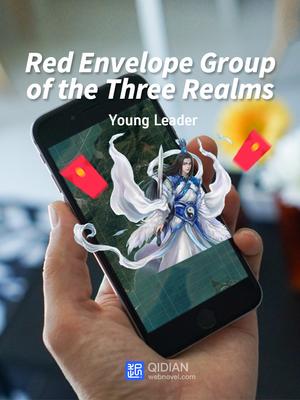
Red Envelope Group of the Three Realms
Chapter 1986 September 1, 2023 -
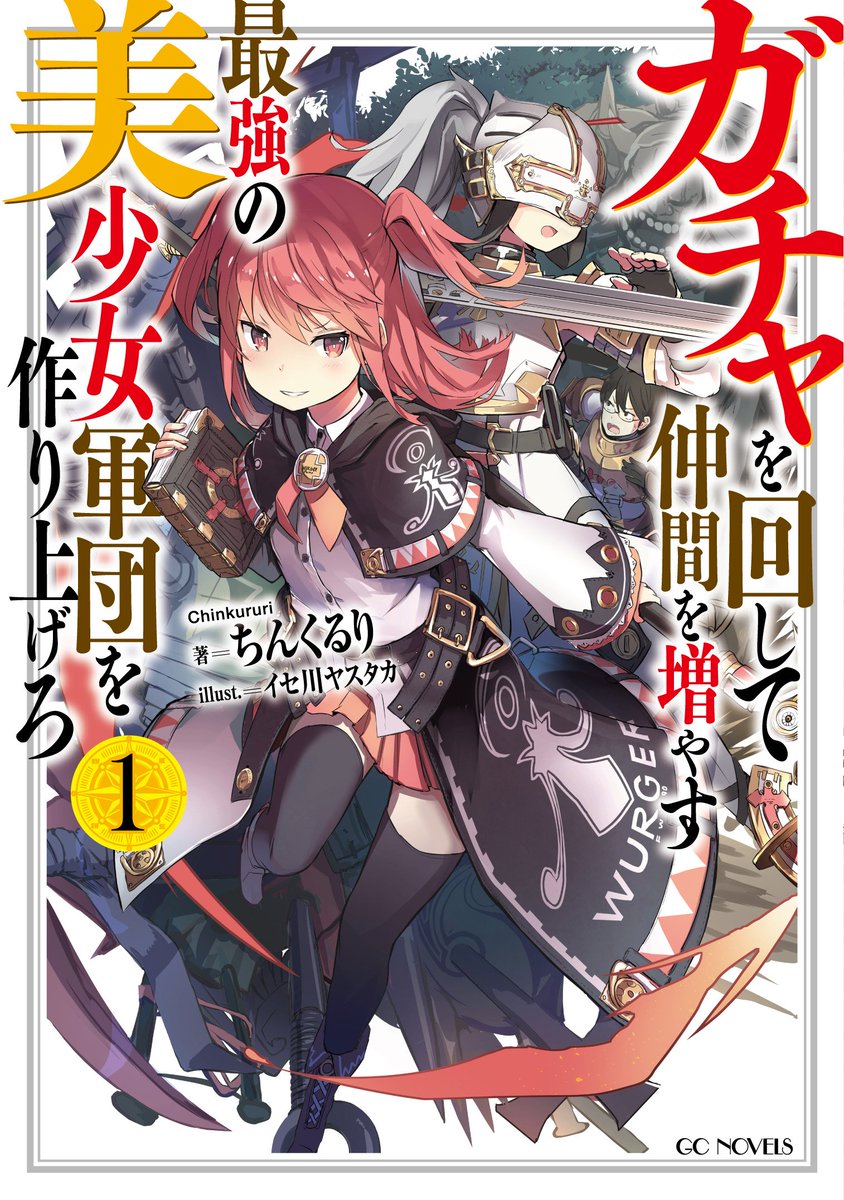
Using Gacha to Increase My Companions and to Create the Strongest Girls’ Army Corps
Chapter 84 August 28, 2023 -

The Cat Transformation
Chapter 27 August 26, 2023 -
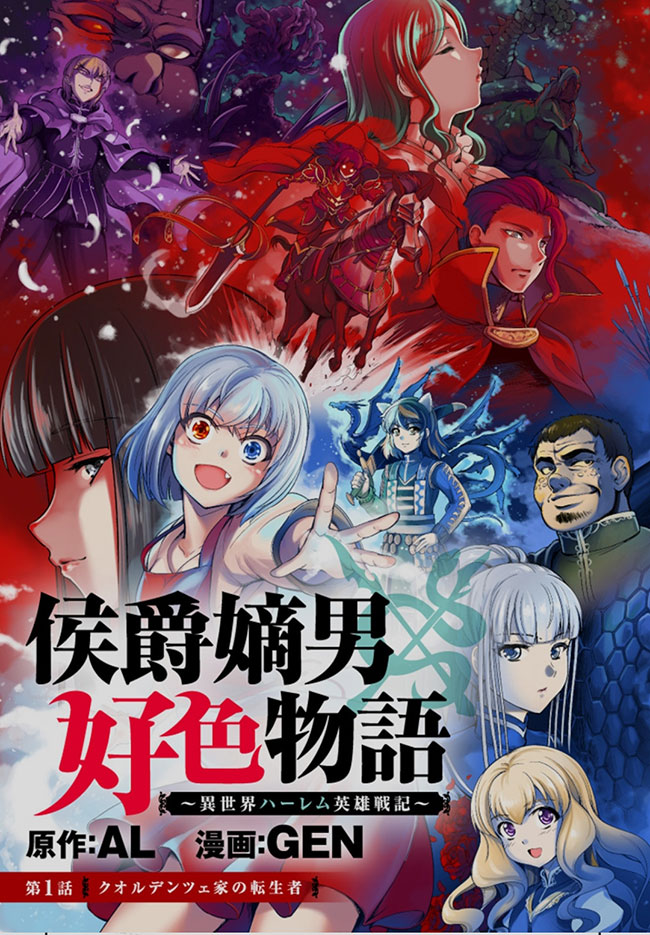
The Marquis’ Eldest Son’s Lascivious Story
Chapter 232 August 26, 2023 -
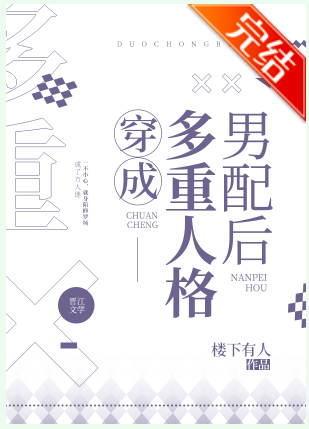
After Dressing as a Male Lead with Multiple Personalities
Chapter 14 August 11, 2023 -
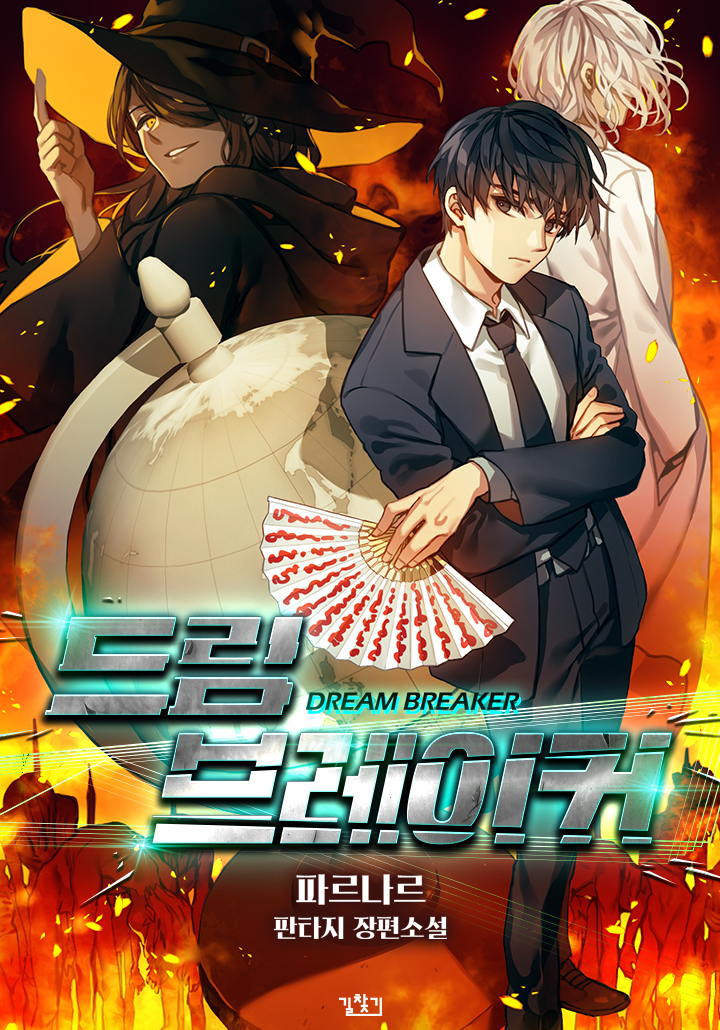
Dream Breaker
Chapter 33 August 8, 2023 -
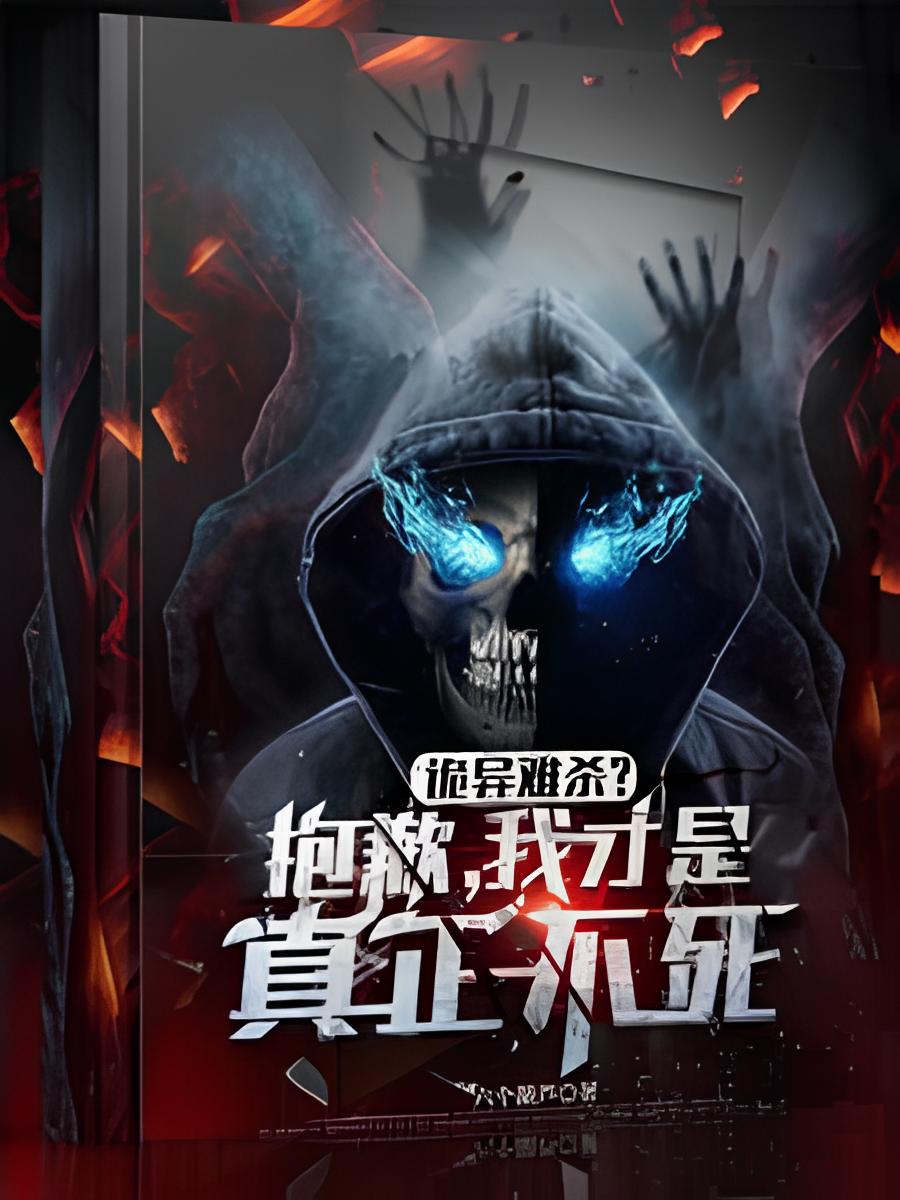
Die, Replay, Repeat
Chapter 2 August 8, 2023 -
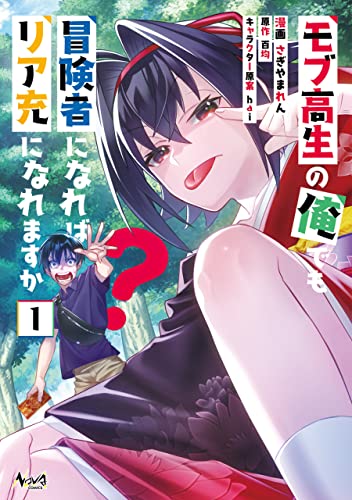
Can Even a Mob Highschooler Like Me be a Normie if I Become an Adventurer?
Chapter 24 August 7, 2023 -

Nido Tensei Shita Shounen wa S-rank Boukensha Toshite Heion ni Sugosu ~ Zense ga Kenja de Eiyūdatta Boku wa Raisede wa Jimi ni Ikiru ~
Chapter 90 August 7, 2023 -
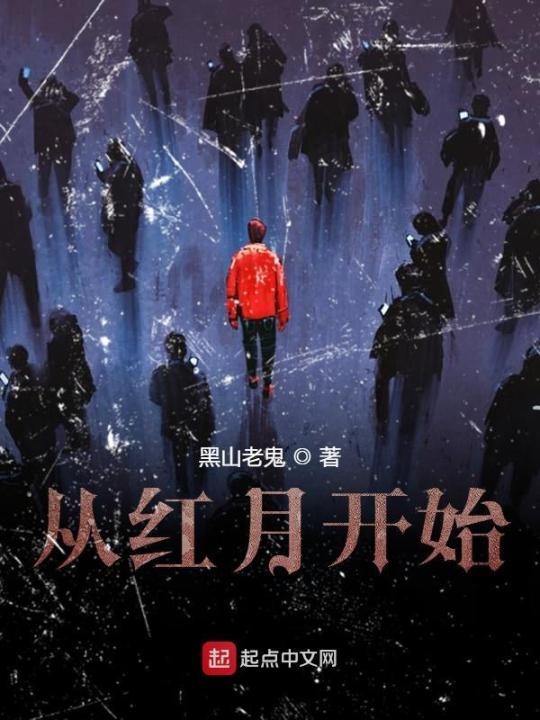
Since The Red Moon Appeared
Chapter 19 August 3, 2023 -

The Daily Love Life Of The Immoral God And His Invisible Wife
Chapter 111 August 2, 2023 -
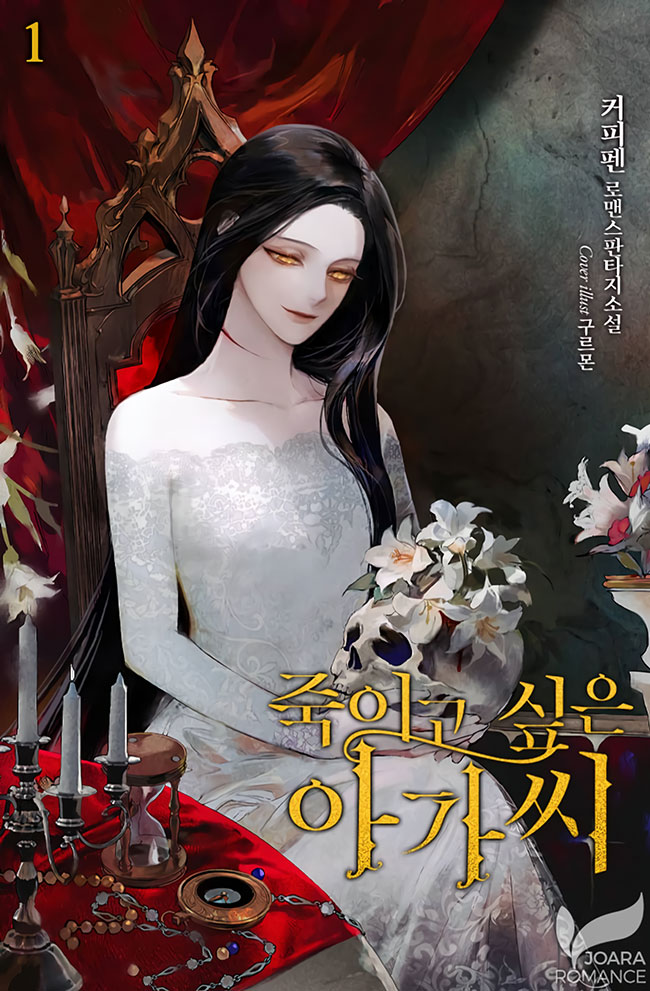
The Lady You Want to Kill
Chapter 18 August 1, 2023
